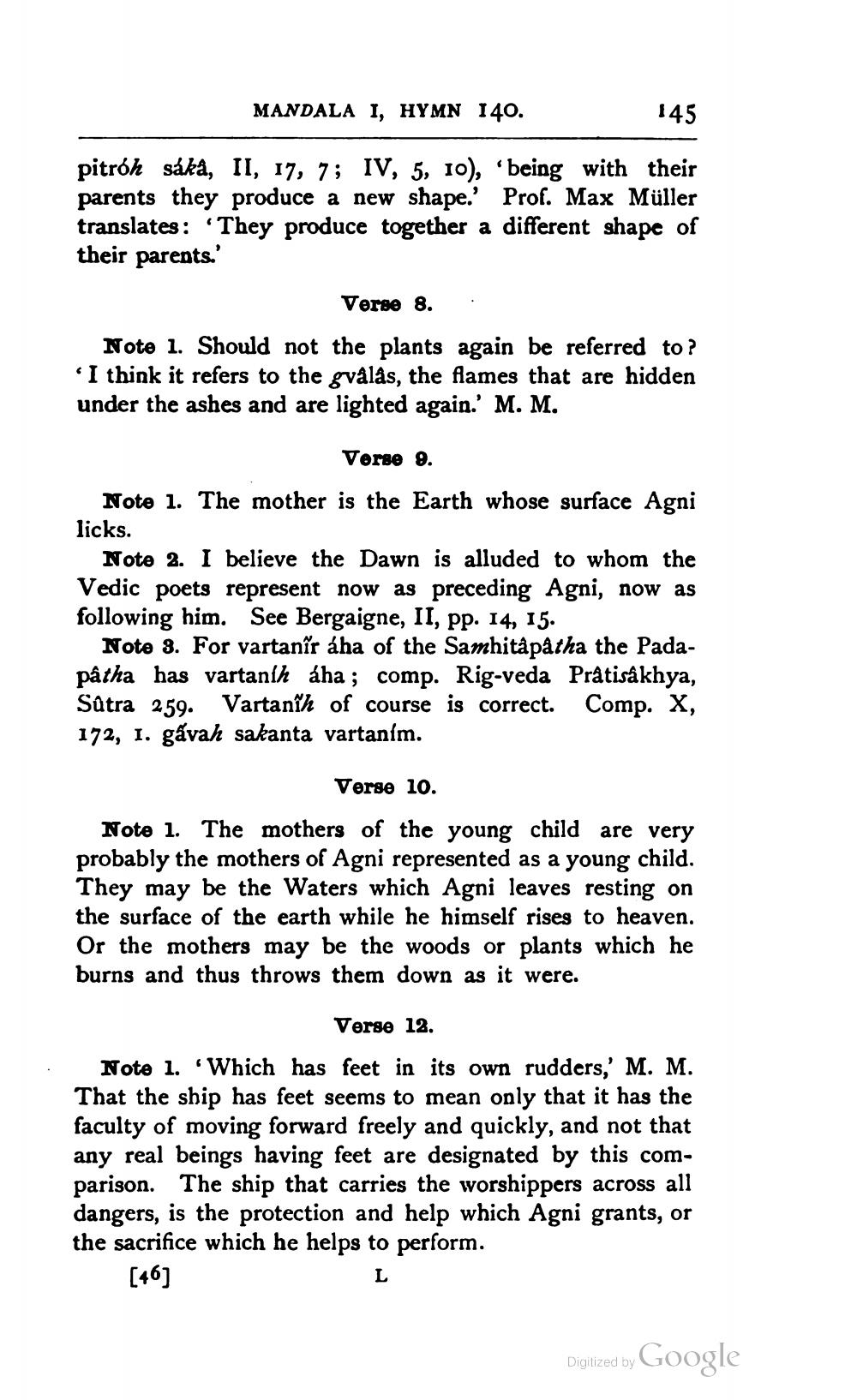________________
MANDALA I, HYMN 140.
145
pitróh sáka, II, 17, 7; IV, 5, 10), being with their parents they produce a new shape.' Prof. Max Müller translates: ‘They produce together a different shape of their parents.
Verse 8. Note 1. Should not the plants again be referred to ? I think it refers to the gválás, the flames that are hidden under the ashes and are lighted again.' M. M.
Vorse o. Note 1. The mother is the Earth whose surface Agni licks.
Note 2. I believe the Dawn is alluded to whom the Vedic poets represent now as preceding Agni, now as following him. See Bergaigne, II, pp. 14, 15.
Note 3. For vartanir áha of the Samhitapatha the Padapâtha has vartanlh áha ; comp. Rig-veda Prátisåkhya, Satra 259. Vartanih of course is correct. Comp. X, 172, 1. gấvah sakanta vartaním.
Verse 10.
Note 1. The mothers of the young child are very probably the mothers of Agni represented as a young child. They may be the Waters which Agni leaves resting on the surface of the earth while he himself rises to heaven. Or the mothers may be the woods or plants which he burns and thus throws them down as it were.
Verse 12. Note 1. Which has feet in its own rudders,' M. M. That the ship has feet seems to mean only that it has the faculty of moving forward freely and quickly, and not that any real beings having feet are designated by this comparison. The ship that carries the worshippers across all dangers, is the protection and help which Agni grants, or the sacrifice which he helps to perform.
[46]
Digitized by Google




